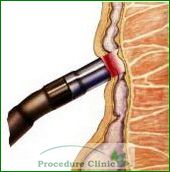The effective Non-surgical Treatment Protocol we use is based on 17 Years Clinic Experience and About 3000 Hemorrhoids Cases with More Than 10,000 Treatments. It takes out your fear of hemorrhoid treatment!
Infrared coagulation (IRC) and rubber band ligation (banding) of hemorrhoids are fast and effective non-surgical solutions.
While many people associate hemorrhoids with painful surgery, only a small percentage of patients actually require surgery. A fast and simple office procedure has taken the fear out of hemorrhoid treatment. The majority of hemorrhoids patients are good candidates for non-surgical treatments, or Infrared coagulation (IRC) and rubber band ligation (banding).
Recently, we reviewed the hemorrhoid cases treated in the past 17 years. We accumulated extensive clinical experience on hemorrhoid treatments due to the vast numbers of hemorrhoid cases and treatments we did, which helped us to consistently refine the treatment protocols based the type of hemorrhoids and severity of hemorrhoids. Therefore, each patient can be offered with a customized treatment protocol with better results.
The IRC and banding both are office-based procedures takes just a few minutes and uses infrared light or tiny rubber bands to treat symptomatic internal hemorrhoids. IRC has quickly become the most widely used office procedure for hemorrhoids and is preferred over other methods because it is fast, effective, well-tolerated by patients, and rarely has complications. IRC can be used to treat the early stages of hemorrhoids, and it is most effective in grade 1-2 hemorrhoids, and banding can be used to treat more advanced hemorrhoids, such as prolapsed grade 2-3 hemorrhoids.
You may need as many as four separate treatment sessions every two weeks to cover all the areas where hemorrhoids appear, but this depends on each individual case and how extensive your hemorrhoids are.
After the IRC or banding procedure, you may feel mild discomfort in the anus and the urge to have a bowel movement sometimes. You are able to resume normal everyday activities immediately afterward. Typically, there are no post-treatment effects. However, there may be slight spot bleeding a few days later, but heavy rectal bleeding is extremely rare. Avoid heavy straining, lifting, and aspirin. If you notice significant rectal bleeding, you should call your doctor’s office. You may use Tylenol as needed and take a warm sitz bath daily to relieve discomfort. A stool softener, fiber, and water will help ease your bowel movement while you heal.





